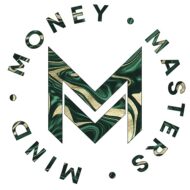Investing with ETFs can be an exciting and profitable addition to your investment portfolio. There are definitely some nuances to ETFs that must be discussed before investing. ETFs are investment vehicles and you should never invest in something that you do not understand. We discussed in detail what is an ETF in my previous post, ETFs 101. Check that out as well.
In this review of Investing with ETFs for beginners, I discuss how to get started investing with ETFs. It gives a quick comparison between ETFs and Mutual funds and offers some advice on which ETF might be a good option for your portfolio. Keep in mind that I am not a financial professional and any advice offered here is purely based on my personal knowledge. Please consult a professional advisor before making any investment decisions.
How do I start Investing in ETFs?
Investing with ETFs can be very easy. We discussed what an ETF is and what kinds are out there in ETFs 101, so we won’t go into much detail on that here. Quickly though, ETF stands for Exchange traded fund and is a collection of investments that tracks a particular index. In other words, a collection of companies and their stock can be bought in one particular investment and that collection of companies is part of an index. Think of the S&P 500 index for reference.
Open an Account
ETFs can be purchased in an investment account, either a brokerage or a retirement account. When you start investing with ETFs, you may see a three or four letter ticker name that is next to the full name of the investment, for example; SPDR S&P 500 ETF Trust (SPY). The SPY is the ticker symbol and this is what you would use if you bought shares of the fund. Whether you buy with an investment advisor or if you are investing on your own.
Invest In The Right ETF: Narrow down Your options

There are over 2000 ETFs out in the market now. They have been really picking up attention. That being said, most brokerage firms have some kind of ETF screening tool. You should use this. It can really help narrow down the options. I would first start with screening out any funds that charge a brokerage commission or have a high expense ratio. As with Mutual Funds, there are many zero commission funds. So, you should not have to pay a commission since.
Next, I would suggest narrowing down the category or sector. Do you want to invest in Stocks, bonds, commodities, International Stocks? You can also look into what companies the ETF holds. There is a rating system for ETFs and I would encourage looking at the higher rated funds while keeping in mind if a fund has a high rating now, it may not indicate that the performance will continue to be high. Lastly, I would narrow down the price of the ETF. Decide how much you would like to spend per share. A more expensive price per share does not indicate a better fund. Conversely, a lower price does not necessarily mean a fund is a lower performer.
Fun Part of Investing with ETFs: Placing the trade
An ETF will trade just like a stock. If you haven’t traded a stock before there are several things to consider during the trading process. The ticker symbol is what you will use to find the ETF to buy. Once you enter the symbol, there should be two prices, a Bid and an Ask. This is the buy and sell aspect of the market. The difference between the Bid and the Ask is the spread. If you are looking to buy shares of an ETF, you would pay the Asking price. If you are looking to sell shares of an ETF, you would receive the Bidding price.
Investing with ETFs: Order Type

A final decision you will need to make when buying shares of an ETF is what type of order do you want. There are several options, so I have listed a little table below.
- Market Order: This is the easiest and most common. I would not suggest that it is the best, but this order type means that once you place the order, the order will execute immediately. This means you are going to take whatever price that is available at the moment.
- Limit Order: This is saying you want to buy or sell at a particular price or better. For example if you have a buy limit order of 100 dollars on a ETF that is trading currently at 102 dollars, you will not buy shares of the ETF until it drops to 100 or lower.
- Stop Order: This is an order that specifies either a sell or buy at market after it reaches a certain price. For example if you own shares of an ETF and place a stop order to sell shares at 95 if the stock is currently trading at 100, this means that if the stock falls to 95, your shares could be sold immediately at the market rate.
- Stop Limit Order: As expected, this combines the benefits of the limit order with the stop capabilities as well. For example, if you are looking to sell shares of an ETF at a limit after the price reaches a certain point. As in our example above, if your stop if 95, you can set a limit at 96, so if the price drops to 95, your order becomes a limit order. You ETF would sell at 96 or higher.
Investing with ETFs versus Mutual Funds
Investing with ETFs and investing in Mutual funds are similar in that they both offer diversification and can have low cost. ETFs are purchased by buying shares and mutual funds are purchased by selecting a dollar amount to spend. Both can have low to no brokerage commissions. ETFs trade intra-day like stocks and mutual funds are priced at the end of the day after the trading on the exchange is over. Typically settlement of mutual fund trades is one day and you have access to your cash, whereas ETFs may have 3 days of settlement before you can withdraw any of your cash.
Mutual funds are typically actively managed and ETFs are typically passively managed. Given that, ETFs usually carry a lower overall cost than mutual funds. Lastly, ETFs may have better tax treatment than mutual funds. Due to the active trading nature inside of mutual funds, they generate capital gains, which can be taxed. This is true whether you sell the mutual or not. Whereas ETFs are not taxed until they are sold and there is a profit on the sale.
In Which ETF should I Invest?

Making the decision to start investing with ETFs is a great step into financial freedom. Selecting the correct one can be daunting and even stressful. Bankrate.com has a list of their 5 best ETFs for 2020 if you need a place to start. These funds may not be the best choice for you particular situation, so I would still encourage you to use the ETF screener and base the decision on things you know.
Just like with Mutual Funds, I would suggest investing in something you like or know about. ETFs are more active in the sense that they trade daily and prices will update real time. Resist the urge to buy or sell on emotion. Investing is a long-term game unless you are looking to become an active trader. For now, I would encourage you to look at index ETFs as they are going to have the lowest expenses in the business and you will still benefit from the diversification of multiple companies.
I hope you enjoyed this post on Investing with ETFs and that it was informative. Please remember that investing takes research and working with a licensed advisor to make the best decisions.
Disclaimer: I receive affiliate compensation for some of the links in this post at NO cost to you. However, these are the best tools I have used and tested that I believe are most effective for launching and running an online business. You can read our full affiliate disclosure in our privacy policy. Also, I am not a licensed advisor, any information within this article is purely my opinion and not an endorsement of an investing strategy.
Before you go…
If you want to learn how you can take ANY business and scale it to your dreams and goals?
Partner up with me by clicking on this link and watching the video.
We will show you EXACTLY how to build a business online and customize a plan just for you. We will help you choose a niche, setup your online business and help with selecting offers that you can promote.
On top of that you will get ONE on ONE mentoring to make sure you are doing things right.
A great way to be able to save more money is when we make more money.
Cheers to your success and See you at the Top!
-Cameron


